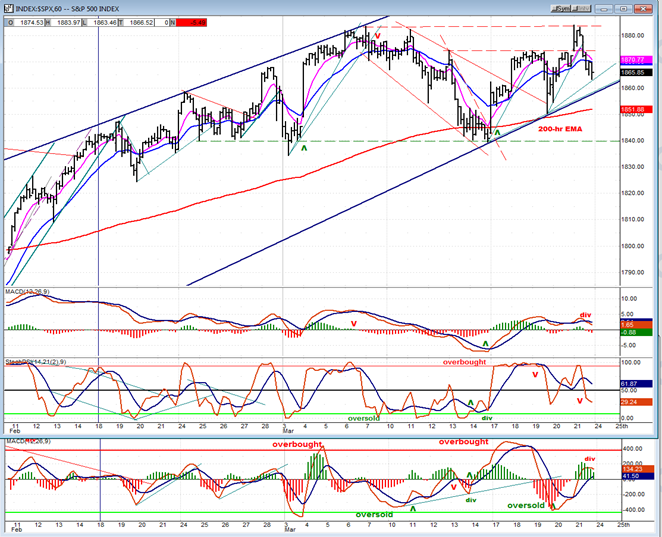Stock Market Cycles Patterns and Oscillators
Post on: 14 Апрель, 2015 No Comment

By Walter Bressert
The order of the universe shows itself in the thousands of cycles observable in nature and documented by the Foundation for the Study of Cycles. It shows in the minute structures of molecules, atoms and sub-atomic particles. It also shows in the ordered structure of the solar system and, as scientists are now discovering, in the interrelationships of galaxies. The smallest particles to the largest clusters of galaxies follow some kind of order. so why not the markets.
The Ultimate Book on Stock Market Timing: Cycles and Patterns in the Indexes
Tidal Swings of the Stock Market
Prices move in a a manner that may initially appear to be random, but with study show an underlying order. Cycles, waves, Gann squares, angles, Fibonacci relationships in both time and price, planetary influences and other observable phenomena are reflections of this underlying order. Unfortunately, we do not know its causes, nor do we have a solid grasp of the rules. but anyone who studies the markets with an open mind will see that there is indeed an order to all markets, especially in the formation of highs and lows, which are focal points or high energy levels of a market.
There are some who arbitrarily dismiss cycles and the natural order of the markets on the premise that such concepts smack of pre-determination and violate man’s god-given free will. But with his free will man can choose to participate in the markets or not, just as he has the choice to participate, or not, in the cycles of good times and recession through his investments. By knowing the approximate timing of cycles man can use them to his advantage.
The predictable cycles of the seasons are there for man to use, and planting corn in November because prices are high would be a waste of time and money. Through observation we know better. Buying stocks or gold at the top of a market is something we all want to avoid, but unfortunately the fundamentals are almost always the most bullish, and most tempting, at tops. Without study we are oblivious to the natural order of the markets, which must be actively sought out and discovered. True, we do not know all of the rules of the markets, but we do know that we want to buy bottoms and sell tops. We also know that we can rack up sizable profits by trading with the trend.

Fortunately for us, the energy of the markets is visible in the movement of price, which when charted, shows repeating patterns of time and price in cycles and Elliott Waves. Market oscillators also reflect this energy as overbought and oversold levels are also cycle highs and lows. By identifying the lengths of the most powerful and consistent cycles, called dominant cycles, we can often anticipate tops and bottoms as well as the direction of the trend, or longer cycle. Much of this is explained in the book, The Power of Oscillator/Cycle Combinations.
Oscillators such as the Relative Strength Index (RSI) and the Channel Commodity Index (CCI) are often used in the financial markets to help predict cycle tops and cycle bottoms. The CCI is a longer-term oscillator that shows the cycle highs and lows more clearly than the sensitive RSI, which usually turns earlier, and also more frequently. Both oscillators have buy and sell lines which are levels that serve as filters to help identify cycle tops and bottoms. As a general guideline an oscillator will rise above a sell line and turn down at or before a cycle top; and an oscillator will drop below a buy line and turn up a t or before a cycle bottom. It is of note that the longer term CCI and the shorter term RSI will complement each other in the identification of the cycle tops and bottoms.
The 4-Year Cycle in the Stock Market
The 4-year cycle in the US stock market can be traced back to 1789, and is the dominant longer-term cycle affecting the stock market, setting trends that often last for three or more years. A typical 4-year cycle averages 49 months from low-to-low, 36 months from low-to-high, and 13 months from high-to-low. The average advance from low-to-high is 107%, or more than a doubling of the level at which the cycle began. Averages, however, are not very helpful in trading a market. All markets have a powerful and consistent weekly cycle that sets the intermediate-term trend. By identifying this cycle it is possible to anticipate tops and bottoms and to determine trends. An historical review of the DJIA and the S&P Index shows a cycle of approximately 20 weeks as measured from low-to-low. However, cycles i the market do not move in sine waves, but often extend, contract and sometimes seem to skip a beat. Markets also act differently in bull and bear markets, leaning to the right in bull markets to produce right translation, and leaning to the left in bear markets to produce left translation.
About the author: Walter Bressert is acknowledged as the man who brought cycles to the futures markets in his original newsletter Hal commodity Cycles, which was profitable 10 of the 12 years it was published (1974-1985). His book, The Power of Oscillator/Cycle Combinations defines a new dimension of oscillator and cycle analysis. His present advisory service, Cyclewatch, is available via mail, FarmDayta, Telerate’s commodity Service. In Cyclewatch he uses cycles and oscillator to forecast tops and bottoms and to identify tops and bottoms as they occur in both financial and agricultural markets. Bressert provides consulting services and offers seminars to educate traders and investors on how to identify tops and bottoms using cycles and oscillators. Many of his seminars and trading methodologies are archived by the MarketClub trading service and can be accessed by all MarketClub members for free.














